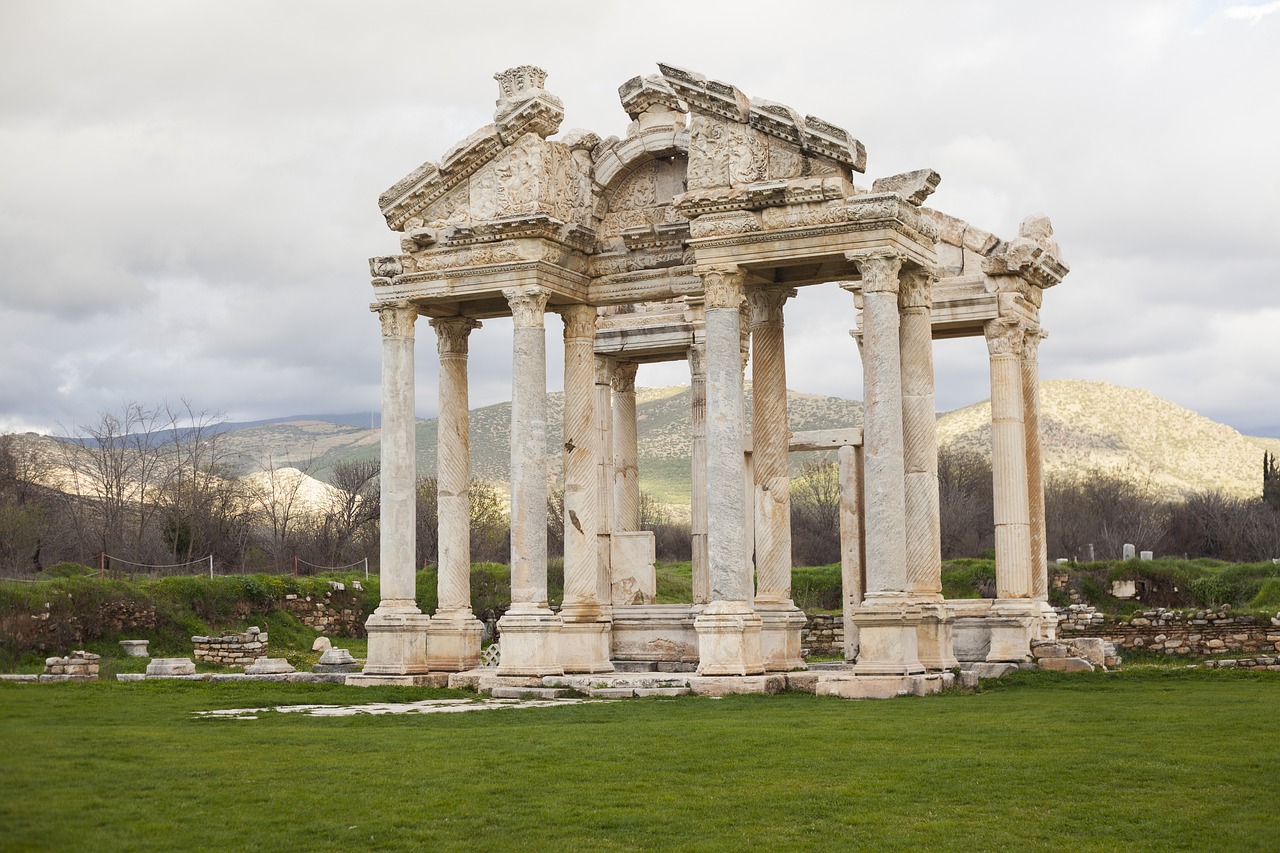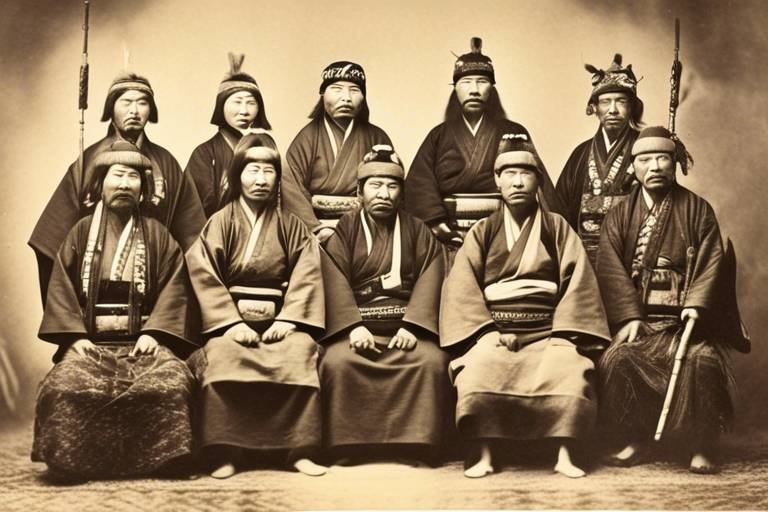The Forgotten Achievements of the Carthaginians
When we think of ancient civilizations, the Carthaginians are often overshadowed by their more famous rivals, the Romans. However, the achievements of the Carthaginians should not be forgotten, as they made significant contributions to various fields that shaped their society and influenced future generations.
One of the lesser-known but crucial aspects of Carthaginian civilization was their extensive trade networks. The Carthaginians established trade routes that spanned across the Mediterranean and beyond, fostering commerce and cultural exchange in the ancient world. Their role in facilitating trade not only boosted their economy but also enriched their society with diverse goods and ideas.
Another remarkable achievement of the Carthaginians was their naval power. They were masters of the seas, developing advanced shipbuilding techniques and creating a formidable navy that dominated maritime trade routes. Their expertise in navigation and maritime warfare allowed them to control key strategic locations and assert their influence across the Mediterranean.
When it came to agriculture, the Carthaginians were innovators in their own right. They implemented sophisticated irrigation systems, adopted efficient crop cultivation methods, and maximized the use of fertile lands to support their growing population. Their agricultural innovations not only ensured food security but also contributed to the prosperity of Carthaginian society.
Art and architecture were also areas where the Carthaginians excelled. Their artistic achievements, including intricate mosaics and sculptures, showcased their cultural sophistication and creativity. The grand structures they built reflected their architectural prowess and cultural identity, leaving a lasting legacy in the ancient world.
Religion played a significant role in Carthaginian society, with a diverse pantheon of gods and elaborate religious rituals. The spiritual beliefs of the Carthaginians influenced their daily lives and societal practices, highlighting the importance of religion in shaping their worldview and values.
Furthermore, the Carthaginians were known for their military tactics, particularly exemplified by generals like Hannibal. Their innovative approaches to warfare and strategic thinking set them apart in conflicts with rival powers, showcasing their military prowess and resilience in the face of adversity.
Language and literature were also areas of cultural significance for the Carthaginians. Their unique language, literary works, and contributions to knowledge preservation through written and oral traditions enriched their cultural heritage and served as a testament to their intellectual achievements.
Lastly, the legacy of the Carthaginians continues to influence subsequent cultures and societies to this day. Their contributions in trade, navigation, agriculture, art, religion, military tactics, language, and literature have left an indelible mark on history, underscoring the importance of recognizing and celebrating the forgotten achievements of this ancient civilization.

Carthaginian Trade Networks
Exploring the lesser-known contributions and accomplishments of the ancient Carthaginian civilization, overshadowed by their conflicts with Rome. Discover the advancements in trade, navigation, agriculture, and more that shaped their society.
Carthage, a bustling hub of trade and commerce, established extensive trade networks that spanned across the Mediterranean and beyond. The Carthaginians were renowned for their maritime expertise and strategic positioning, allowing them to dominate trade routes and facilitate cultural exchange in the ancient world. Through these networks, Carthage imported valuable resources such as metals, textiles, and exotic goods, while exporting goods like olive oil, wine, and pottery to distant lands.
Their trade prowess extended to partnerships with various civilizations, enabling the exchange of goods, ideas, and technologies. Carthaginian merchants navigated the seas with skill and precision, utilizing advanced shipbuilding techniques to ensure the safe passage of their cargo. This network not only boosted the economy of Carthage but also influenced the cultural landscape of the regions they traded with, leaving a lasting impact on the interconnected societies of the time.
Furthermore, the Carthaginians established key trading posts and colonies along their routes, serving as vital hubs for commercial activities and cultural interactions. These outposts not only facilitated trade but also acted as centers for the exchange of knowledge, customs, and traditions, enriching the diversity of the Carthaginian trade network.
Coming soon...

Carthaginian Naval Power
Carthaginian Naval Power was a cornerstone of their civilization, showcasing their prowess in maritime affairs that rivaled even the most advanced naval forces of their time. The Carthaginians were renowned for their innovative shipbuilding techniques, which allowed them to construct sturdy vessels capable of traversing the vast Mediterranean Sea with ease. Their naval fleet was not only formidable but also strategically deployed, enabling them to establish dominance over key trade routes and secure their economic interests.
One of the most iconic symbols of Carthaginian naval power was the trireme, a swift and agile warship equipped with multiple rows of oars that allowed for quick maneuvers in battle. These warships were instrumental in securing Carthage's control over the seas and projecting their military might across the Mediterranean region. The Carthaginians' naval supremacy was further solidified by their skilled sailors and commanders, who navigated treacherous waters with precision and expertise.
Moreover, the Carthaginians were pioneers in naval warfare tactics, employing innovative strategies such as the use of grappling hooks to immobilize enemy ships and boarding parties to engage in close combat. Their naval forces were not only a means of defense but also served as a powerful tool for expanding their influence and securing their maritime trade networks.
Overall, Carthaginian Naval Power was a testament to their maritime ingenuity and strategic vision, shaping the course of ancient history and leaving a lasting legacy that continues to inspire naval warfare tactics to this day.

Carthaginian Agricultural Innovations
Carthage, the ancient civilization known for its military prowess, also made significant strides in agricultural innovations that played a crucial role in sustaining its population and economy. The Carthaginians implemented advanced irrigation systems that efficiently utilized water resources to support crop cultivation in their fertile lands. By harnessing the power of irrigation, they were able to increase agricultural productivity and ensure food security for their growing society.
In addition to irrigation, the Carthaginians developed innovative farming techniques that optimized land use and crop yields. They carefully selected crops that thrived in their climate and soil conditions, leading to successful harvests that sustained their population. The use of crop rotation and soil enrichment practices further enhanced the fertility of their agricultural lands, demonstrating their deep understanding of sustainable farming methods.
Moreover, the Carthaginians were pioneers in the cultivation of specialized crops such as olives, grapes, and cereals, which not only provided sustenance but also formed the basis of their thriving trade networks. Their agricultural expertise enabled them to produce surplus goods for export, contributing to the prosperity of Carthaginian society and strengthening their economic influence in the ancient world.
Furthermore, the Carthaginians recognized the importance of preserving their agricultural knowledge and practices for future generations. Through oral traditions and written records, they documented their agricultural innovations, passing down valuable insights on farming techniques and crop cultivation. This commitment to knowledge preservation ensured the continuity of their agricultural legacy and the sustainability of their society.

Carthaginian Art and Architecture
Exploring the lesser-known contributions and accomplishments of the ancient Carthaginian civilization, overshadowed by their conflicts with Rome. Discover the advancements in trade, navigation, agriculture, and more that shaped their society.
Carthaginian art and architecture were a testament to the creativity and cultural sophistication of this ancient civilization. The Carthaginians excelled in creating intricate mosaics, sculptures, and grand structures that reflected their artistic prowess and attention to detail.
Their mosaics, often depicting scenes from daily life, mythology, and nature, showcased a mastery of color and design. These vibrant artworks adorned the floors and walls of Carthaginian homes and public buildings, adding beauty and depth to their surroundings.
In addition to mosaics, Carthaginian sculptors crafted statues and reliefs that captured the essence of their subjects with remarkable realism. These sculptures, whether portraying deities, prominent figures, or everyday people, reflected the Carthaginians' skill in sculpting various materials, such as marble and bronze.
When it came to architecture, Carthage boasted impressive structures that combined functionality with aesthetic appeal. The city's buildings featured intricate carvings, decorative elements, and innovative design techniques that set them apart from their contemporaries.
One of the most notable examples of Carthaginian architecture was the Tophet, a sacred precinct dedicated to religious rituals and ceremonies. This site, adorned with monumental stelae and altars, served as a focal point for spiritual practices and communal gatherings.
Overall, Carthaginian art and architecture reflected the civilization's rich cultural heritage and artistic ingenuity, leaving a lasting legacy that continues to inspire admiration and study to this day.

Carthaginian Religious Beliefs
The Carthaginians held a rich tapestry of religious beliefs that permeated every aspect of their society. At the heart of their spirituality was a diverse pantheon of gods and goddesses, each governing different aspects of life and nature. From Baal Hammon, the god of fertility and agriculture, to Tanit, the goddess of the moon and the city, their deities reflected a deep connection to the natural world.
Central to Carthaginian religious practices were elaborate rituals and ceremonies conducted to honor and appease the gods. Sacrifices, both animal and human, were offered as gifts to ensure divine favor and protection. These rituals were believed to maintain the cosmic order and harmony essential for the prosperity of the city-state.
Moreover, religion played a pivotal role in the daily lives of the Carthaginians, guiding their decisions and actions. Priests and priestesses held significant influence, interpreting omens, offering guidance, and presiding over religious ceremonies that infused spiritual meaning into every aspect of Carthaginian life.
One of the most infamous aspects of Carthaginian religious beliefs was the practice of child sacrifice, particularly in times of crisis or war. While controversial and condemned by some, it was seen as a necessary sacrifice to gain the favor of the gods and ensure the survival and success of the community.
Overall, Carthaginian religious beliefs were deeply ingrained in their culture, shaping their worldview, values, and societal norms. The spiritual legacy of the Carthaginians continues to intrigue and fascinate historians and archaeologists, offering a glimpse into the complex and enigmatic world of ancient Mediterranean civilizations.

Carthaginian Military Tactics
When it comes to military tactics, the Carthaginians were known for their innovative and strategic approaches to warfare. Led by brilliant generals like Hannibal Barca, they employed tactics that often surprised and outmaneuvered their enemies. One of their most famous strategies was the effective use of elephants in battle, which instilled fear and confusion among opposing forces.
Carthage's military prowess extended beyond traditional battlefield tactics. They were skilled in naval warfare, utilizing their superior fleet to control the seas and launch surprise attacks on enemy territories. Their ability to adapt to different terrains and circumstances gave them a significant advantage in conflicts against rival powers.
Moreover, the Carthaginians were masters of deception and psychological warfare. They often employed tactics that misled their opponents, leading them into traps or disadvantageous positions. By utilizing their knowledge of the land and exploiting the weaknesses of their adversaries, they were able to achieve remarkable victories against seemingly superior forces.
In addition to their tactical acumen, the Carthaginians were adept at leveraging their resources effectively. They maintained a well-trained and disciplined army, supported by a network of allies and mercenaries. This allowed them to project power across vast distances and engage in prolonged campaigns with remarkable resilience.
Overall, the military tactics of the Carthaginians were characterized by a combination of strategic thinking, adaptability, and audacity. Their legacy in the field of warfare continues to be studied and admired by military historians and strategists to this day.

Carthaginian Language and Literature
The Carthaginians had a rich tradition of language and literature that played a significant role in shaping their culture and society. The Carthaginian language, known as Punic, was a Semitic language closely related to Phoenician. It was written using the Phoenician alphabet, with some variations and additions to suit the Carthaginian dialect. This unique language was used for official inscriptions, religious texts, and everyday communication among the Carthaginian people.
Carthaginian literature encompassed a variety of genres, including epic poetry, historical accounts, religious texts, and philosophical writings. One of the most famous Carthaginian literary works is the Treatise on the Gods by the philosopher Sanchuniathon, which explored the mythology and religious beliefs of the ancient Carthaginians. This text provided valuable insights into their spiritual practices and worldview.
In addition to written literature, the Carthaginians also had a rich oral tradition passed down through generations. Storytelling and oral performances were integral to their culture, preserving historical events, myths, and moral teachings. These oral narratives served as a means of education and entertainment, fostering a sense of community and shared identity among the Carthaginian people.
Furthermore, the Carthaginians were known for their meticulous record-keeping and documentation of important events. They maintained archives of historical records, legal documents, and trade agreements, ensuring the preservation of knowledge for future generations. This commitment to written records contributed to the continuity of Carthaginian culture and history.

Carthaginian Legacy and Influence
The legacy of the Carthaginians continues to influence various aspects of modern society, despite their ancient civilization being overshadowed by the might of Rome. Their contributions in trade, navigation, agriculture, art, architecture, religion, military tactics, language, and literature have left a lasting impact on subsequent cultures and societies.
One of the most significant legacies of the Carthaginians lies in their extensive trade networks that spanned across the Mediterranean and beyond. These routes not only facilitated the exchange of goods but also fostered cultural interactions and the spread of ideas, shaping the commercial landscape of the ancient world.
Furthermore, the maritime expertise of the Carthaginians, showcased through their advanced shipbuilding techniques and formidable navy, left a profound influence on naval warfare and exploration. Their dominance of the seas played a crucial role in shaping the geopolitical dynamics of their time.
In the realm of agriculture, Carthage's innovative irrigation systems, crop cultivation methods, and efficient use of fertile lands set a precedent for sustainable farming practices. Their agricultural innovations not only supported their growing population but also influenced agricultural practices in neighboring regions.
The artistic and architectural achievements of the Carthaginians, characterized by intricate mosaics, sculptures, and grand structures, reflected their cultural sophistication and creativity. These artistic endeavors continue to inspire contemporary artists and architects, showcasing the enduring legacy of Carthaginian artistry.
Religiously, the Carthaginians' diverse pantheon of gods, religious rituals, and the significance of religion in their daily lives have left a mark on subsequent belief systems and practices. Their spiritual beliefs and practices continue to be studied and referenced in the fields of archaeology and religious studies.
Additionally, the military tactics employed by Carthaginian generals, notably Hannibal, in their conflicts with rival powers demonstrated innovative approaches to warfare that have influenced military strategies throughout history. Their strategic brilliance and adaptability continue to be studied by military historians and tacticians.
The Carthaginians' unique language, literary works, and contributions to the preservation of knowledge and history have also had a lasting impact on linguistic studies and literature. Their written and oral traditions provide valuable insights into the cultural heritage of the ancient world.
In conclusion, the legacy and influence of the Carthaginians are far-reaching, touching upon various fields of human endeavor. Their achievements, though often overlooked, continue to resonate in the realms of trade, navigation, agriculture, art, religion, military tactics, language, and literature, serving as a testament to the enduring legacy of this ancient civilization.
Frequently Asked Questions
- What were the main achievements of the Carthaginians?
The Carthaginians made significant contributions in trade, navigation, agriculture, art, architecture, military tactics, language, and literature. Their advancements in these areas shaped their society and influenced subsequent cultures.
- How did Carthaginian trade networks operate?
Carthaginians established extensive trade routes across the Mediterranean and beyond, facilitating commerce and cultural exchange. They were known for their expertise in trade and played a crucial role in the ancient world's economy.
- What was the significance of Carthaginian naval power?
The Carthaginians developed advanced shipbuilding techniques and had a formidable navy that dominated the seas. Their naval prowess allowed them to control trade routes, defend their territories, and project power in the Mediterranean region.
- What were some of the key agricultural innovations of the Carthaginians?
Carthage implemented innovative irrigation systems, crop cultivation methods, and utilized fertile lands effectively to support their population. Their agricultural practices were advanced for their time and contributed to their prosperity.
- How did Carthaginian art and architecture reflect their civilization?
Carthaginian art and architecture showcased their cultural sophistication and creativity. They produced intricate mosaics, sculptures, and grand structures that reflected their artistic achievements and cultural identity.
- What were the religious beliefs of the Carthaginians?
The Carthaginians had a diverse pantheon of gods and engaged in various religious rituals. Religion held significant importance in their daily lives, influencing their practices, beliefs, and societal norms.
- How did Carthaginian military tactics differ from those of other civilizations?
Carthaginian generals, like Hannibal, employed innovative military strategies in their conflicts. Their tactics were known for their adaptability, surprise elements, and strategic thinking, setting them apart in ancient warfare.
- What was the legacy and influence of Carthaginian civilization?
The Carthaginians left a lasting impact on subsequent cultures and societies. Their contributions in various fields continue to resonate today, influencing art, architecture, language, and military strategies in the ancient and modern worlds.



















